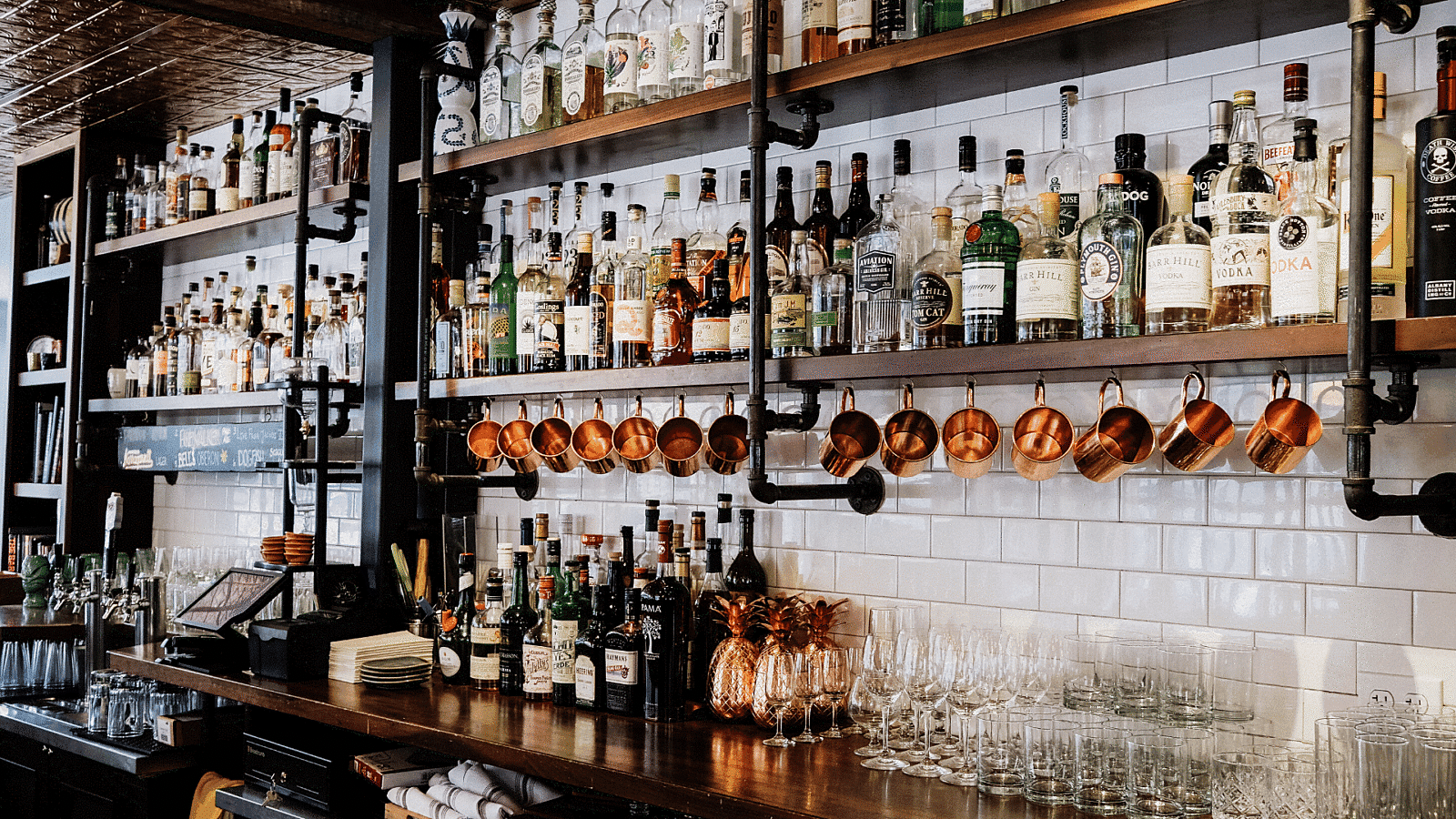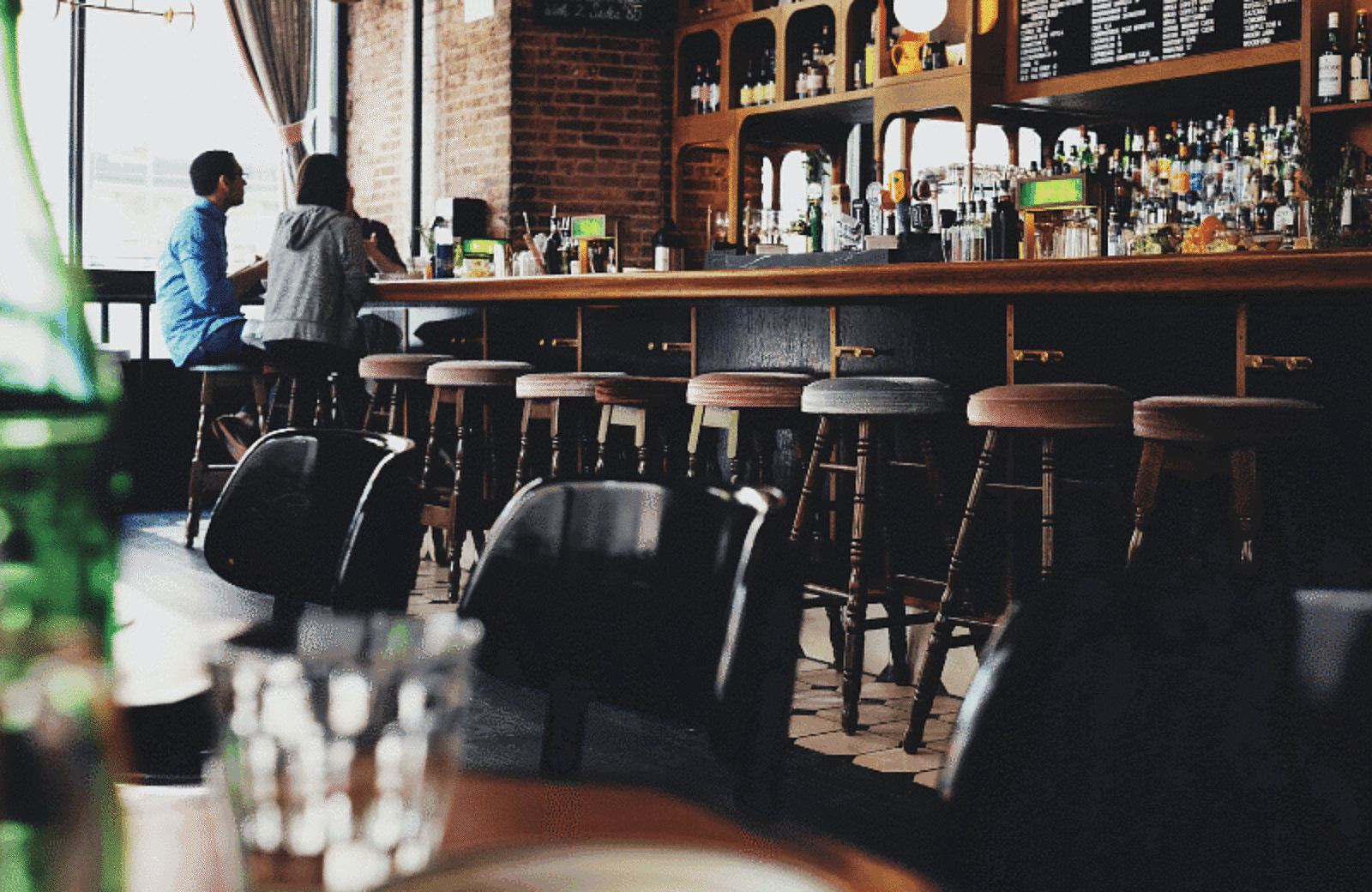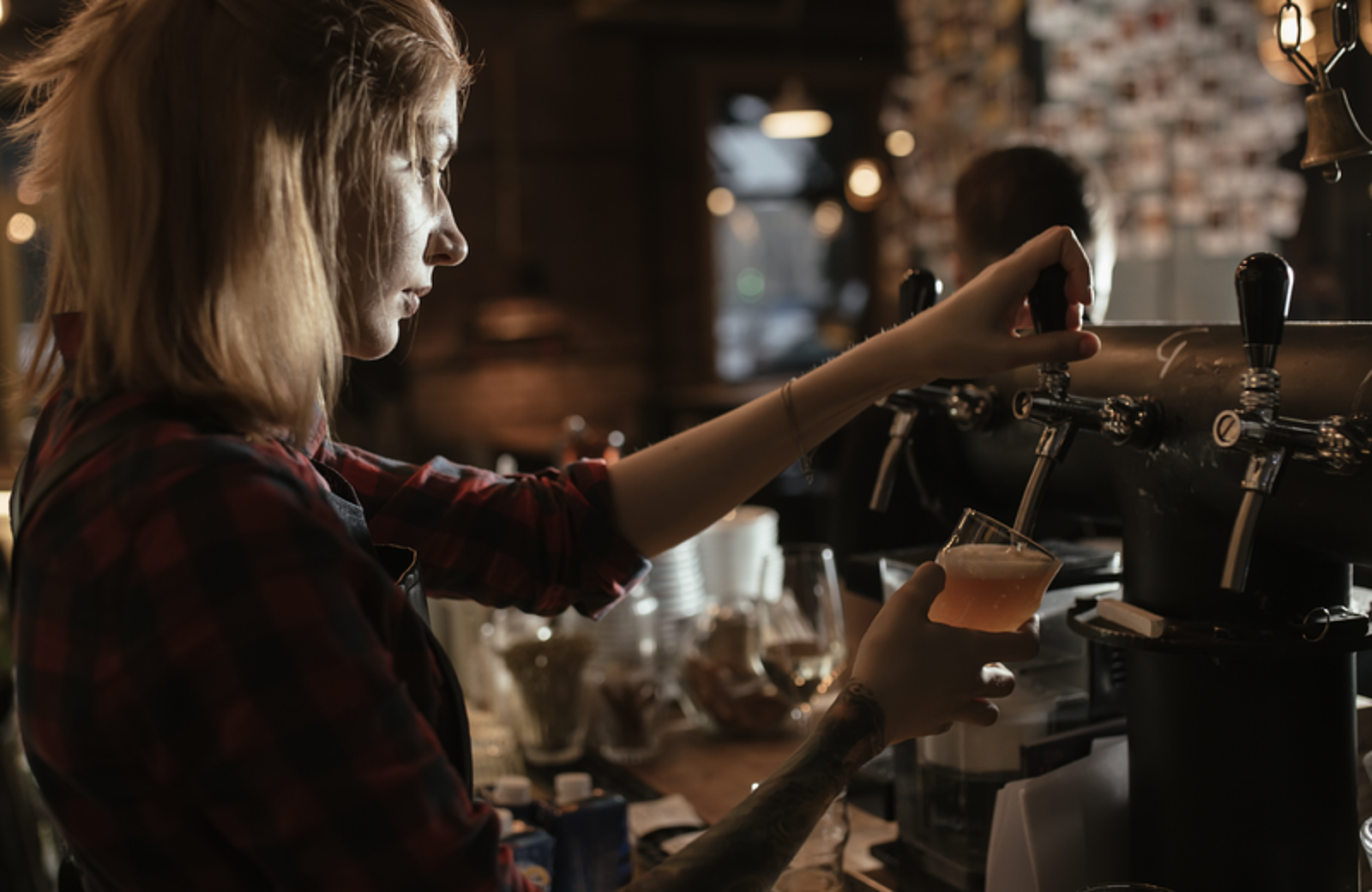
How Much Does It Cost to Open A Bar? [Bar Startup Costs]
Want to open a bar? You’ll need a business plan — and you’ll need to know how much it costs to open a bar.

Kyle ThackerAuthor


Bar Opening Calculator
This calculator lays out some of the fundamental financial costs of opening a bar, so you can start planning and bring your dream bar to life.
Get free downloadDespite a very rocky few years, the bar industry is back on a strong growth trajectory. In 2023, the bar and nightclub industry is worth over $26 billion, and it’s easy to see why: Bars bring people together and provide a much-needed space for friends to gather and let off some steam.
It’s an appealing business model, too: bar owners get to connect with regulars, create a fun and supportive workplace, and, of course, make lots of delicious drinks — and they have an easier time profiting than restaurants do.
For industry lifers and newbies alike, the idea of opening a bar is a frequent daydream. But what does it take to bring it into reality?
But before you jump into bar ownership head-first, it’s important to learn about how much it costs to open a bar. We’ll get into all the startup costs and operational expenses associated with opening a bar — read on and find out if you can swing it, or if you’ll need to figure out how to finance a new bar venture.
How profitable is it to open a bar?
Compared to a restaurant business, bars are a more easily profitable venture. Because of the very high markup on alcohol, lower inventory costs, lower labor cost, and, sometimes, smaller brick-and-mortar footprint, bars have a higher average profit margin than restaurants. While restaurants deal with an average profit margin of 3-5%, bars have an average profit margin of 10-15% — making them 3-5x more profitable than restaurants.
How much does it cost to open a bar?
It costs between $110,000 and $850,000 to open a bar and get it up and running, putting the average cost of opening a bar at $480,000. It’s generally less expensive to take over an existing bar business, because you’ll save on renovation costs, plus equipment and furniture can be built into the price.
There are a lot of factors that influence the total cost of opening a bar, which we’ll explore below. Then, we’ll dive into the types of costs associated with opening and running a bar.
Bar Business Plan Template
Use this free bar business plan template to easily create a great business plan that organizes your vision and helps you start, grow, or raise funding for your bar.

What factors impact bar opening costs?
Bar Concept and Square Footage
Different types of bars require vastly different amounts of start-up capital. Here’s a few types of bar concepts to consider, each with their own financial advantages and disadvantages:
A small, intimate wine bar specializing in wines from a specific region or a specific winemaking process
A sports bar with lots of TVs and a small menu of comfort food snacks
A craft brewery that partners with local food trucks
A college bar with drink specials and a basement dance floor
A divey neighborhood bar with no frills, beer by the pitcher, and a jukebox
A cozy Irish pub
A specialty bar focused on mostly gin drinks
A brewpub with a packed live music schedule (check if you’ll need an entertainment license!)
There are pros and cons to going with a larger or smaller bar space.
If you open a large bar, you’ll be paying more in rent or a mortgage, and you’ll need more staff to cover all that ground — but you’ll have the benefit of being able to fill it with more customers if all goes well, generating much more revenue. But paying for a larger space has its risks: a slow night with mostly empty tables is a lot more costly.
Conversely, if you save on location costs and labor costs by opting for a small bar, you won’t be losing as much money on a slow night — but the earning potential of the space will have a much lower ceiling.
Food Service vs. No Food Service?
Many bars stick to serving alcoholic beverages (and some non-alcoholic beverages), and they do so for good reason. By not serving food, they don’t need space for a kitchen or kitchen equipment, they don’t need kitchen staff, and they don’t have to worry about the high cost (and relatively low markup) of food inventory.
But there’s a benefit to serving food at your bar: it can help keep patrons who get hungry onsite for longer, and it can bring up average check size significantly.
Some bars, especially dive bars, formally or informally partner with nearby restaurants to satisfy their increasingly hungry customers. They encourage patrons to go get their own takeout and bring it back, or order delivery from a nearby restaurant and enjoy it alongside your drinks and warm service.
Leasing vs. Buying
Cost is a huge consideration when deciding whether to lease or buy. Leasing or renting a bar business is often the more affordable approach, so it’s more common. But just like in residential real estate, you’ll be paying rent to a landlord — not putting money back into your mortgage and working your way to owning the space, like you would be if you bought a commercial space.
Established Bar or New Build
One way to dramatically reduce the costs of opening a bar is by renting or buying a space that is already established as a bar. Existing bars will likely have some equipment built into the price, and will require fewer renovation and construction costs than reworking a non-bar space. Plus, you’ll have a better idea about how a bar business performed in that exact location — and what you’ll need to do to be more successful. You’ll also have a better estimate on operating costs that can fluctuate from location to location, like utilities.
Bar Location
The location of a bar will be the biggest factor that contributes to its price. A better location, with lots of foot traffic, easy transit accessibility, and proximity to other businesses will be much more expensive than a bar location that’s isolated, harder to get to, and overall less appealing.
Going broader, a bar located in a city center will be much more costly than a bar in a suburban or rural area — and a bar in New York will be much more expensive than a bar in a smaller city like Denver.
Consider the balance between the cost of a location that appeals to your target customer and the earning potential that it brings, compared to a cheaper but less appealing location.
Bar Equipment Checklist
Opening or upgrading a bar? Don't miss any essential equipment! Download our free, comprehensive Bar Equipment Checklist.

Bar Startup Costs and Operational Costs
Understanding the factors and the costs associated with opening a bar is key for protecting your business from damaging missteps.
Bar Location Costs
Starting your own bar will involve significant location costs, both up-front and on an ongoing basis. Early in the bar opening process, a bar owner will need to pay a rent deposit or a mortgage down payment, as well as any additional fees to a real estate agent.
Each month, a bar owner will also need to pay rent or pay their mortgage, as well as insurance and maintenance costs.
Bar Equipment Costs
Regardless of whether you are buying an existing bar or building a new one, there will be some equipment costs involved — and the cost of equipment can add up quickly.
Bars need large equipment like glasswashers, refrigerators, ice machines, wine cellars, sinks, dishwashers, and draft beer lines, plus furniture like tables, chairs, booths, and a bar. They’ll also need small equipment items, which are less likely to be included when buying an existing bar, like blenders and espresso machines. Finally, bars also require a lot of smallwares, like spoons, glassware, knives, cutting boards, storage containers, and napkins.
Learn more in our full list of bar equipment.
How much does bar equipment cost?
In this itemized list of just some of the equipment you’ll need to open a bar, the total cost of bar equipment reaches over $30,000. Depending on the size and capacity of your bar, this amount could easily double — or more.
Equipment Financing
Equipment financing is a helpful way for small business owners, including bar owners, to slowly pay for major equipment purchases if they don't have the funds available upfront. It’s a type of loan — learn more in our guide to equipment financing.
Bar Licensing and Permit Costs
Every bar will need to obtain a liquor license, among other licenses and permits required to open a bar and sell alcohol to the public.
Liquor licenses can be expensive and take a long time to be processed and received, so it’s important to apply for your licenses as early as possible.
This list of liquor license fees by state shows that the cost of a license or permit can vary significantly depending on your state.
How much does a liquor license cost?
The average cost of a liquor license is around $1500, but it will vary by state — as low as $100, or higher than $10,000, so do your research with your local Alcohol and Beverages Commission office.
Cost isn't the only factor worth researching with regard to licenses and permits: some states and cities have a cap on the number of licenses in circulation at any given time.
Bar Inventory Costs
Building up — and maintaining — a full bar’s worth of liquor can be costly. Ask around and find the best vendors and distributors to get you the best possible prices for wine, beers, and spirits. You can expect to spend at least $6000 on your starting inventory.
One of the most important ongoing costs is replenishing your bar inventory. Wine, beer, spirits, and cocktails are the highest profit center for bars and restaurants, so closely managing your alcohol inventory is one of the most effective ways to maximize profits. Make sure your point of sale has liquor inventory capabilities.
Bar Operating Reserves
It’s important to have operating reserves (also called cash reserves or what you call in your personal finances, a “rainy day fund”) to cover any unexpected expenses or unanticipated dips in business.
The dollar amount that you should have in reserves is dependent on your monthly operating costs.
How much should you have in your bar’s “rainy day fund”?
If you're looking for a ballpark number so you can get started allocating cash reserves, three to six months of operating expenses is the guideline given by the US Chamber of Commerce.
Bar Marketing Costs
Bars can market themselves very effectively for free on social media sites like Instagram and TikTok, and by signing up existing customers to an email newsletter about your bar, including upcoming events and menu updates.
However, there are some paid marketing strategies that can help you reach new customers, including social media ads that you can display to people in your city who fall under your target demographic.
Learn more about building up a robust bar marketing plan.
Bar Maintenance Costs
Bars are, by definition, spaces that can get messy, full of things that can get bumped and broken.
Repeated use can cause anything from blenders to barstools to break, and those are both relatively easy fixes — issues like plumbing, grease trap maintenance, beer line maintenance, and structural maintenance can be tougher. It’s easier to pay smaller amounts to fix small problems instead of letting small problems get bigger, so allocate a few hundred dollars a month to keeping everything in working order.
Professional Services
Running a bar comes with operational, financial, logistical, and sometimes legal challenges. Whether it’s navigating your first tax season or dealing with a zoning problem during the buildout, you’ll need a trusted crew of professionals that you can call. That means an accountant, a lawyer, a real estate agent, and an insurance broker, among others.
Professional fees don’t come cheap, but being proactive when faced with a professional-level problem is often a better approach than trying to tackle it alone and ending up with a bigger (and more expensive) problem.
Bar Labor Costs
One of the largest recurring costs for running a bar is labor cost. This is another area where investing regularly can help you in the long run: ensuring your staff is well-paid is certainly expensive, but having a staff that stays on the team for years at a time cuts back significantly on the cost of employee turnover.
Plus, paying your staff well helps ensure that service will be welcoming, consistent, and reliable, helping you turn first-time visitors into regulars.
How to Fund Your New Bar
With a good grasp on the various costs associated with running a bar, you can start thinking about how you’ll fund your new bar. First, you’ll need a business plan.
Write Your Bar Business Plan
As you begin to pursue financing, your investors or the bank may want to see your bar business plan. Use our bar business plan template to get started as you plot out all the most important details about your dream bar. You’ll need to be prepared to speak to:
Who you are
Your bar concept and sample menu
Your location plan
Market analysis and competitors
Your operations plan
Your staffing plan
Your financial projections
Your marketing plan
Your launch strategy
[business plan template]
Find a bar funding source that works for you
There are so many ways a would-be bar owner can go about securing financing for their bar. They include SBA loans, personal loans, lines of credit, alternative loans, merchant cash advances, Toast Capital Loans, and more.
Toast Capital provides eligible Toast customers with access to loans from $5K to $300K that can be used for any restaurant need. Toast Capital Loans have one fixed cost with automated repayment that flexes with sales* – with no compounding interest and no personal guarantees. Once you’ve been approved and signed your Toast Capital Loan agreement, you can expect funds to be sent to your bank account in as soon as one business day**.
Toast Capital Loans are issued by WebBank. Loans are subject to credit approval and may not be available to borrowers in certain jurisdictions. WebBank reserves the right to change or discontinue this program without notice.
*Toast Capital Loans offer different target repayment terms ranging from 90 days to 360 days, depending on eligibility. The maximum repayment term is 60 days following the end of the target repayment term. Any outstanding balance due at the end of the maximum term will be collected automatically via ACH.
**Funds are typically disbursed within 1-2 business days after signing your credit agreement.
To learn more about your funding options, read our Complete Guide to Restaurant Financing and Loans.
Track and Control Operating Costs with a Great Bar Point of Sale
Now more than ever, owners and operators have many options that enable them to improve their operations and streamline how they manage costs in their bar. Look for a bar point of sale with staff management, inventory, and offline mode capabilities.
Open Your Successful Bar
Your dream bar is just a few steps away. Okay, some of them are pretty big steps, but with the right plan in place and a reliable source of funding, you can bring your neighborhood bar to life.
More Bar Resources
Is this article helpful?
DISCLAIMER: This information is provided for general informational purposes only, and publication does not constitute an endorsement. Toast does not warrant the accuracy or completeness of any information, text, graphics, links, or other items contained within this content. Toast does not guarantee you will achieve any specific results if you follow any advice herein. It may be advisable for you to consult with a professional such as a lawyer, accountant, or business advisor for advice specific to your situation.
Read More
Subscribe to On the Line
Sign up to get industry intel, advice, tools, and honest takes from real people tackling their restaurants’ greatest challenges.





